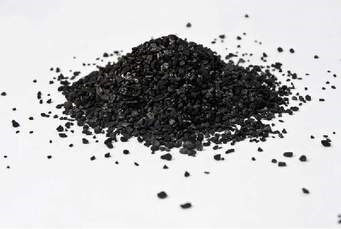
An activated Carbon Bed Filter is a chemical filter and needs to be designed to provide enough contact time to be effective. We highly recommend Bulk Carbon Adsorber Systems to be effective in treating dissolved organics in Amine and Glycol Systems and VOC Removal Processes for Vapor Phase applications.
Activated Carbon can be used for both Liquid and Vapor Phase applications and no matter what the process it is imperative to take into account exactly what the contaminants are and what specific carbon product will be most effective to meet the target effluent requirements.
Various types of carbon have different pore structures and it is important to review your carbon application process expectations to ensure your system will be designed to be effective and meet technical and budget constraints. There is no single product that is best for every carbon application.
Particle size, activity level, pore structure and physical properties dictate the best carbon selection for your particular application and then ensuring vessel sizing is adequate to perform to the effluent quality requirements and offer enough longevity to be cost-effective.
In general, coconut shell based carbons are used for low concentration applications and processes where the hardness of the coconut shell is an advantage. Coal based carbons are sometimes considered the “jack of all Trades” and tend to be microporous in nature and designed to remove smaller molecules which can be captured within the pore matrix.
A lot of the lignite-based GAC (Granular Activated Carbons) are macroporous in nature and can be effective in removing oil and grease which can diffuse into the pore structure of the carbon and be removed through the adsorption process.
No matter what the process application it is imperative to ensure the Carbon Adsorption System is designed and sized correctly with the correct carbon product for the contaminants that need to be removed. A properly designed Carbon Adsorber will function the best and run more economically than a system that is not application specific and not meet client expectations from an operational or feasibility standpoint.
Because activated carbon has such a unique pore structure it is important to know that the carbon can act as a physical filter, but is best suited to act as an adsorbent for dissolved organics, not the filtration of solid contaminants. A general rule of thumb is that carbon can filter out particles down to 10 microns in size so if a liquid stream contains a significant amount of suspended solids, filtration ahead of the carbon bed will help to improve its service life. It is also important to ensure there is a downstream 5 micron particle filter to capture and small carbon fines that could migrate and cause the liquid being processed from downstream contamination.
For effective Vapor Phase Carbon Systems, in addition to the appropriate size of the vessel it is also important to utilize a carbon product that is predominantly microporous to ensure effective removal of low molecular weight contaminants, has low dust forming properties, good product hardness, and good resistance to attrition as well as an overall versatile adsorbent.
Request Information
As an Energy Industry Professional Neil has a well-rounded knowledge of what it takes to effectively produce oil and gas to maximize the benefit. For the past 34 years working in the Oil-Patch, Safety and Environmental Protection has always been important to Neil and his associates. Neil feels Energy Companies and the Industry have come a long way to do things better and safer while continuing to contribute to a Global Economy and continues to look at the future with a positive attitude.